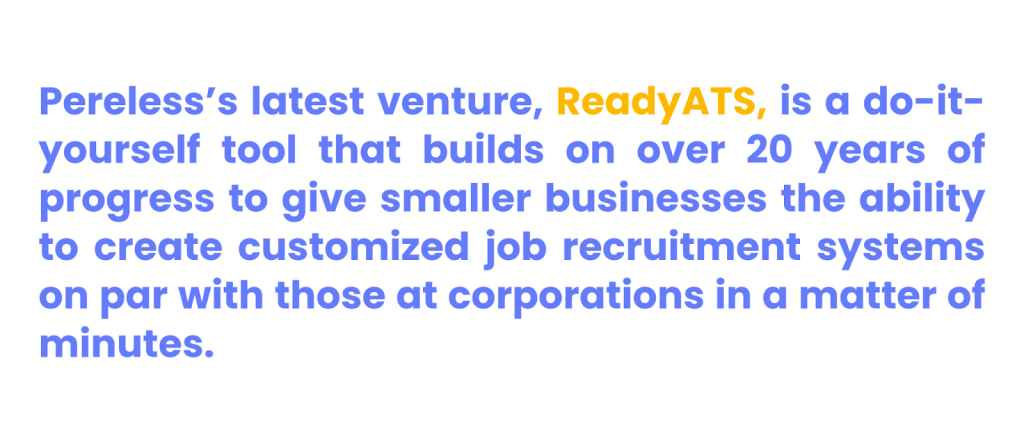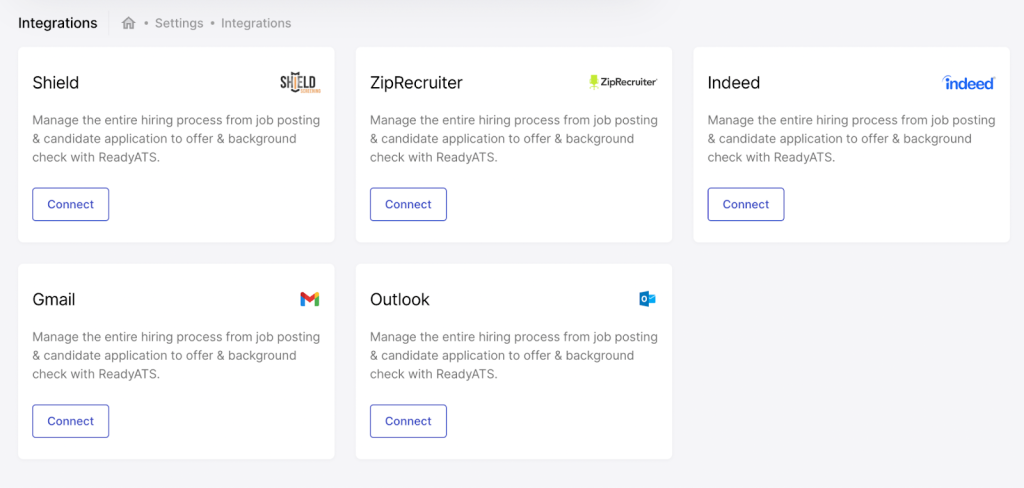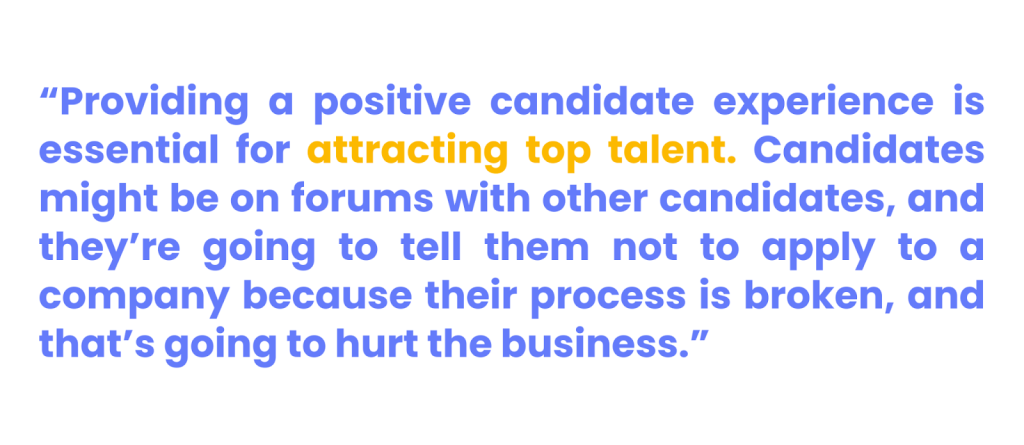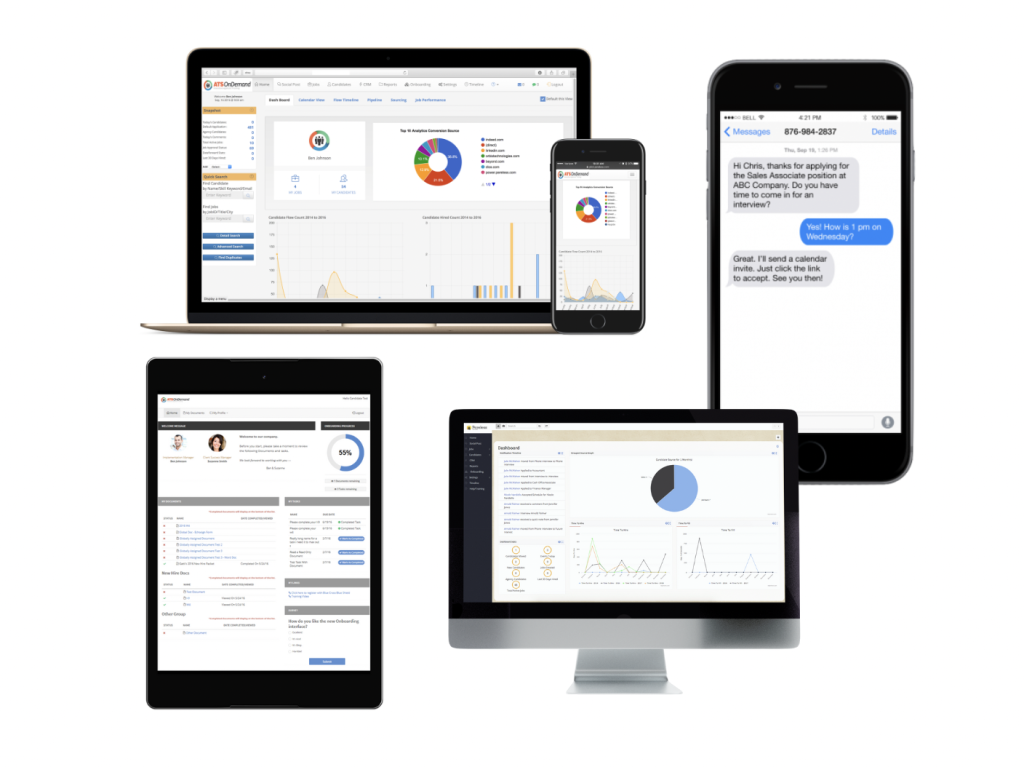When the Internet first transformed recruitment from a paper-based to a digital process two decades ago, applicants and employers didn’t feel “linked in,” but stressed out.
A typical process went something like this: A company’s HR department would list an opening on one or more sites like CareerBuilder or Monster. Over the next few days, their department’s email account would be flooded with hundreds or even thousands of resumes. HR staff then had to sift through them one by one, looking for a few potential needles in a mountain of virtual haystacks.
The lion’s share of what came in was often worthless. Because it was now so easy to apply – people no longer had to put in the effort of printing their resumes and taking a trip to the post office – throngs responded to positions that they had no qualifications for at all. You’d sometimes read the cover letters and wonder, did these people even know what they applied for?
Among the chaos, Arthur Pereless saw an opportunity. Pereless recalls being one of a dozen or so companies founded at the time that aimed to develop solutions for the unmanageable process. Today, he noted, all of those others have been bought out or folded, but the family of companies he leads as CEO, including Pereless Systems and ATS OnDemand, are still going strong.
“Our whole mantra was, this is a broken process,” Pereless said. “We started Pereless Systems with the idea that we were going to revolutionize the market, in terms of making a single interface where people could handle all these disparate processes.”
The company created highly customizable software that serves as a one-stop shop for all of a company’s recruiting needs. You could use it to create a listing and automatically post it on as many online job boards you were interested in, then gather and review all of the responses in one place. It has evolved in response to the changing needs of the day, with new features that enable talent acquisition managers to better screen candidates, real-time communication between both parties and the automation of tasks that once cost both companies and candidates time and money.

Compatible with Top Products
One of the hallmarks of Ready ATS software is its seamless integration with other prominent services and tools in the industry. Pereless said he and longtime CFO Frank Su learned early on that it was often best to take advantage of products that are trusted and widely used then to try to reinvent them.
When one customer inquired about whether they could provide background checks, they initially branched out to create their own service for it but soon came to see it as mission creep. Instead, they modified their software to allow clients to screen job applicants with the top background check services on the web.
“A lot of companies in today’s market have moved toward becoming one product for all. You’ll see a payroll company that decides it wants to do recruiting, contact management and all of these other things, but sometimes you can stray from your core competency,” Pereless said. “We can plug and play a lot of companies into our platform for no charge. That allows you to utilize not only a best-in-breed recruiting process, but also companies that you’ve already established relationships with.”
ATS OnDemand’s Partners and Integrations page includes a list of companies that specialize in virtual interviews, background checks, job listings, payroll, and other services that it is already compatible with. Others can always be coded in as needed.


Responsive to the Needs of Users
Many of the modifications made over the years made the process simpler for applicants as well. Dissatisfaction with online application systems a decade or two ago often centered on how long they took to complete. In a nightmare scenario, you could spend an hour thoughtfully responding to each question, only to see the page time out and all of your work evaporate when you clicked “submit.”
Pereless and his team have worked with companies to eliminate hurdles for applicants, creating shorter forms that more closely target the essential information they need to decide who should make the first cut. ATS OnDemand’s software could pull information from resumes and other uploaded documents to automatically answer questions. Beyond being a nuisance, Pereless warns that tedious application systems can be costly.

Pereless also points to the advancements the software has made in improving response times and communication for applicants. The system can be programmed to determine immediately whether an application doesn’t meet a company’s standards, notify the candidate right away, and refrain from passing it up the chain to take up an HR screener’s time. It can also provide candidates avenues to send and receive text messages to receive updates on where they are in the process.

Change Is the Constant
Looking ahead, Pereless believes a few societal shifts taking place in the U.S. will continue to alter recruitment technologies and the workforce itself. For instance, the pandemic forever disproved the notion that workers had to be in their office to be efficient. Now, many companies are open to hiring candidates living far from their headquarters, and top talent expects the option to work remotely for at least some percentage of their time.
Diversity, equity and inclusion initiatives are also a major driver of hiring trends, with companies eager to build workforces that better reflect America. Getting there isn’t easy, but Pereless noted that his team has helped by advising companies on how to craft job descriptions that level the playing field and attract more diverse applicants. The software can track the demographics of applicants to show whether their efforts have been successful.
But the biggest disruptor on the horizon? Artificial intelligence. Ready ATS and ATS OnDemand are already using it for functions like ranking candidates and virtual assistant chatbots. In time, Pereless believes AI will be able to analyze millions of resumes and data on employee productivity to predict which applicants in a pool would be most impactful based on the text of their resumes.
Looking back on all of the innovations that have been made from the founding of Pereless Systems in 2000 to the recent launch of ReadyATS, Pereless knows the work is only beginning.
“One day I said to Frank, are we almost done developing? And he said, ‘The day we’re done developing is the day we’re out of business,’” Pereless recalled. “That spoke volumes to me and it set a precedent within our company that we always have to be forward-thinking.”





